#contemporary culture
Text
Unrelated things I manage to evoke in my thesis on Beauty and the Beast, modern fairy tales and self-love (titled From Folktales to Fantasy: Beauty and the Beast, Contemporary Rewritings and Self-Love), a list (caution, long post ahead):
Hayao Miyazaki's environmental tales.
In contemporary rewritings of folktales and fairy tales, these revised critical versions often follow the major issues of the time: the feminist tales of Angela Carter or Margaret Atwood of the 20th century are amongst the prime examples, but one may just as well cite Hayao Miyazaki's contemporary environmentalist and anti-war stories.
Arthurian Legends:
Nonetheless, ages change, people’s priorities change, ways of life change, and with these evolutions, heroes and stories mutate too. They evolve, but they’re never forgotten. King Arthur and Merlin are still household names, even after a millennia and a half of legends; their stories followed the times and took on new shapes to keep on meaning something to their audience.
Le Roman de Renart and "Le hérisson, le chacal et le lion" (the hedgehog, the jackal and the lion, a traditional animal tale in North Africa, Tamazight in origin):
Animal Tales are the first chapter of the ATU Index, going from ATU 1 to 299, in which the characters are talking animals usually interacting between themselves (think Roman de Renart or the tales of the hedgehog, jackal and lion in North Africa).
*On the subject of the hedgehog, the jackal and the lion, I really recommend looking up their stories. If you like cartoonish stories of the clever fox and the stupid wolf, Tom and Jerry style, you will like them.
Narnia (actually referenced a few times, the thesis does talk about Fantasy, but CS Lewis is quoted only the once):
In the dedication of The Lion, the Witch and the Wardrobe, C. S. Lewis wrote “some day you will be old enough to start reading fairy tales again”. As the reader ages and grows up, the taste for stories also evolves.
Neil Gaiman (completely out of the blue, I just wanted to quote him at least once):
the classic tale of Beauty and the Beast with all its space left to creation easily lends itself to the new scene. “Fairy tales”, Neil Gaiman writes in the introduction to Fragile Things, “are transmissible. You can catch them, or be infected by them.” They are, in their most basic form, in the bare bones of their structures, the “currency we share with those who walked the world before ever we were here.”
Doctor Who (I will find a why to quote DW in any circumstances, just watch me):
“The Universe generally fails to be a fairy tale. And that’s where we [the helpers and the leaders, heroes, doctors, teachers] come in.” That’s where writers and storytellers come in. Crafting stories is recreating a kinder, more merciful and fair world, where good wins, evil is defeated, love is everything, good deeds are rewarded and bad actions punished, justice is served and honour is upheld.
Edith Nesbit's The Story of the Amulet + more Narnia, because I will also find a way to talk about the Pevensies:
Harper spends six weeks with Rhen and Grey, and when she comes back to DC, six weeks have also passed. This is different from most Fantasy novels which actions happens in both Primary and Secondary Worlds; from Edith Nesbith’s The Story of the Amulet (1906) to Lewis’ Narnia, the passage of time in the Secondary World never matches the passage of time in the Primary World—the Pevensies spent close to two decades being kings and queens of Narnia, and yet at their return in England, not a single second had gone by, and they were back to being children again, a fact that I have always found cruel; they were adults, competent and regal, soldiers, scholars and diplomats, and then they were back to being children, powerless and ordinary.
Yet another Narnia quote - in my defence, I use Tolkien's On Fairy Stories as one of my major reference, so I had to give some room to Lewis too - + me being very French:
C.S. Lewis does write that “adventures are never fun while you're having them” (The Voyage of the Dawn Treader, Narnia book 5), but après la pluie le beau temps—storms never last forever, and the adventure always ends. That is what Fantasy tells the reader: you will go through hard times, but there will always be joy to find after the sadness.
MeToo, Greta and Malala (I swear it makes sense):
Belle just wants to be left alone with her wood-carving tools. What introvert passionate about their hobby doesn’t understand that? Lucie wants revenge on the man who hurt her; that is the whole point of the MeToo movement. Nyx wants to save her people and is ready to sacrifice herself for the cause; real life heroines fighting for their ideals are the idols of today (Greta Thunberg, Malala Yousafzai…). Harper represents the everyday life of millions of poor, disabled people, not only in the USA, but across the world. Beast wants to be loved; don’t we all?
*I actually really love that one tiny paragraph.
The "we live in a society meme" (aka the beginning of the descent into madness of the writer):
In meme terms: “we live in a society”. And that society can be crushing, draining, destroying. How then does one uphold one’s sense of self and worth when everything conspires to ruin and empty one’s heart and mind? Even though the meme is originally absurd, it quickly became a satire of the world in which we live now, where there is no place nor time to slow down, to just breathe, to take care of others, to take care of one’s self, because there is always a bill to pay, a meeting to run to, a deadline looming close, a train to catch.
Queerness (by the way if you guys know any queer retellings of B&tB please send them my way):
Depending on one’s level of ease and comfort, the co-existing inside the community requires more or less efforts and concessions to one’s authentic identity and tastes. Consider, for example, the way homosexuality and any form of queerness have been and are still viewed in many parts of the world throughout time: the main history of the queer community is to hide away an authentic, personal part of who they are in order to stay safe within a larger community that discriminate against expressions of queerness.
The "mortifying ordeal of being known" meme (sos, the writer has lost the plot):
By agreeing to play the game and follow the rules, no matter how adverse to one’s authentic nature, we tacitly agree to be seen. There is another meme, that first appeared in an essay for The New York Times in 2013: “the mortifying ordeal of being known”. The full quote goes like this: “If we want the rewards of being loved we have to submit to the mortifying ordeal of being known.” In essence, trying to hide and conceal one’s authentic self is to deprive yourself from being truly known and loved for who you are; it is to take the risk of being only superficially known and loved for who you pretend to be, the role you play, the mask you wear.
The "I can fix him" meme (what the heck is the writer talking about):
Here is a third meme, much more recent, born on Twitter in 2019: “I can fix him. I can make him better.” While the urge to help your neighbour is perfectly honourable, it can sometimes take on a sort of narcissistic veneer: it becomes no longer about the person you want to help, but about the power you can exercise over that person by turning them into the exact image of them you have, no matter if this image coincide with their authentic self or not.
Shakespeare (hell yeah, finally! Okay, it's not R&J, but still; who am I if I am not rambling about Willy):
The self is not a stable entity. It evolves, adapts to its circumstances, to the situation at the hand. “All the world's a stage and all the men and women are merely players” (As You Like It, 2. 7. 139), Shakespeare was already writing at the end of the 16th century. The deal has not changed. Everyone keeps playing a part that they believe is what society demands of them.
And finally... Kintsugi. Just for fun:
The Japanese art of kintsugi consists of repairing broken pottery with gold, letting the breaks and the defects visible, thus making them part of the history of the piece. Being broken therefore is not a sign of weakness; it becomes another sort of beauty, a sign of strength. The Beast’s curse breaks him down to his base nature, but ending the curse does not mean that the breaks disappear.
#thesis writing#master's thesis#contemporary culture#cultural studies#folklore studies#literature#beauty and the beast#fairy tales#rapha talks#rapha writes#one last part + the conclusion and i am DONE i can do it#i have run out of steam i have no inspiration left but only one day to finish this is the eleventh hour#tag yourself which unrelated insane reference are you#i'm the shakespeare quote
18 notes
·
View notes
Text

HelloMe
#HelloMe#design#studio#contemporary culture#Berlin#portfolio#HM 001 010#2023#Week 36#website#web design#inspire#inspiration#happywebdesign
2 notes
·
View notes
Text
When Literature Meets Art. One Hundred Years of Italo Calvino at Scuderie del Quirinale. Arte. it

An exhibition at the Scuderie del Quirinale in Rome is honoring the centenary of Italo Calvino's birth. The event highlights the writer's connection between literature and art. This news was reported by Arte.it.
Rome is celebrating the centenary of the birth of Italo Calvino, one of the most influential Italian writers of the 20th century.
The exhibition at the Scuderie del Quirinale explores Calvino's relationship with art and literature and his legacy and relevance to contemporary culture.
The curator, Mario Barenghi, is a professor of Italian literature and a renowned expert on Calvino's work.
The exhibition features more than 200 items, including manuscripts, letters, drawings, paintings, sculptures, photographs, and videos illustrating Calvino's creative process and connections with other artists and intellectuals.
Ales SpA / Scuderie del Quirinale organizes the exhibition in collaboration with Electa, a leading publisher of art books in Italy.
It also includes manuscripts, letters, documents, and personal objects illustrating Calvino's life and creative process.
The aim is to offer a multidisciplinary and immersive experience that invites visitors to discover the richness and diversity of Calvino's vision and imagination.

Image credit Luigi Serafini, Page from Codex Seraphinianus, 1977, colored pencil and India ink drawing on a paper published in 1981, Franco Maria Ricci Editore, Parma
To gain further information, please click the link below.
⏩ The Board Behind ⏩
#the board behind#Italo Calvino#Scuderie del Quirinale#Culture in Rome#literature#art#meet art#art exhibition#exhibitions#vision#immagination#contemporary culture
5 notes
·
View notes
Text
the fact that shakespeare was a playwright is sometimes so funny to me. just the concept of the "greatest writer of the English language" being a random 450-year-old entertainer, a 16th cent pop cultural sensation (thanks in large part to puns & dirty jokes & verbiage & a long-running appeal to commoners). and his work was made to be watched not read, but in the classroom teachers just hand us his scripts and say "that's literature"
just...imagine it's 2450 A.D. and English Lit students are regularly going into 100k debt writing postdoc theses on The Simpsons screenplays. the original animation hasn't even been preserved, it's literally just scripts and the occasional SDH subtitles.txt. they've been republished more times than the Bible
#due to the Great Data Decay academics write viciously argumentative articles on which episodes aired in what order#at conferences professors have known to engage in physically violent altercations whilst debating the air date number of household viewers#90% of the couch gags have been lost and there is a billion dollar trade in counterfeit “lost copies”#serious note: i'll be honest i always assumed it was english imperialism that made shakespeare so inescapable in the 19th/20th cent#like his writing should have become obscure at the same level of his contemporaries#but british imperialists needed an ENGLISH LANGUAGE (and BRITISH) writer to venerate#and shakespeare wrote so many damn things that there was a humongous body of work just sitting there waiting to be culturally exploited...#i know it didn't happen like this but i imagine a English Parliament House Committee Member For The Education Of The Masses or something#cartoonishly stumbling over a dusty cobwebbed crate labelled the Complete Works of Shakespeare#and going 'Eureka! this shall make excellent propoganda for fabricating a national identity in a time of great social unrest.#it will be a cornerstone of our elitist educational institutions for centuries to come! long live our decaying empire!'#'what good fortune that this used to be accessible and entertaining to mainstream illiterate audience members...#..but now we can strip that away and make it a difficult & alienating foundation of a Classical Education! just like the latin language :)'#anyway maybe there's no such thing as the 'greatest writer of x language' in ANY language?#maybe there are just different styles and yes levels of expertise and skill but also a high degree of subjectivity#and variance in the way that we as individuals and members of different cultures/time periods experience any work of media#and that's okay! and should be acknowledged!!! and allow us to give ourselves permission to broaden our horizons#and explore the stories of marginalized/underappreciated creators#instead of worshiping the List of Top 10 Best (aka Most Famous) Whatevers Of All Time/A Certain Time Period#anyways things are famous for a reason and that reason has little to do with innate “value”#and much more to do with how it plays into the interests of powerful institutions motivated to influence our shared cultural narratives#so i'm not saying 'stop teaching shakespeare'. but like...maybe classrooms should stop using it as busy work that (by accident or designs)#happens to alienate a large number of students who could otherwise be engaging critically with works that feel more relevant to their world#(by merit of not being 4 centuries old or lacking necessary historical context or requiring untaught translation skills)#and yeah...MAYBE our educational institutions could spend less time/money on shakespeare critical analysis and more on...#...any of thousands of underfunded areas of literary research i literally (pun!) don't know where to begin#oh and p.s. the modern publishing world is in shambles and it would be neat if schoolwork could include modern works?#beautiful complicated socially relevant works of literature are published every year. it's not just the 'classics' that have value#and actually modern publications are probably an easier way for students to learn the basics. since lesson plans don't have to include the#important historical/cultural context many teens need for 20+ year old media (which is older than their entire lived experience fyi)
23K notes
·
View notes
Photo

Intersections of Play: Paul Pfeiffer's The Playroom, 2012
8K notes
·
View notes
Photo

The layers of contemporary culture for Jacob Rochester




0 notes
Text
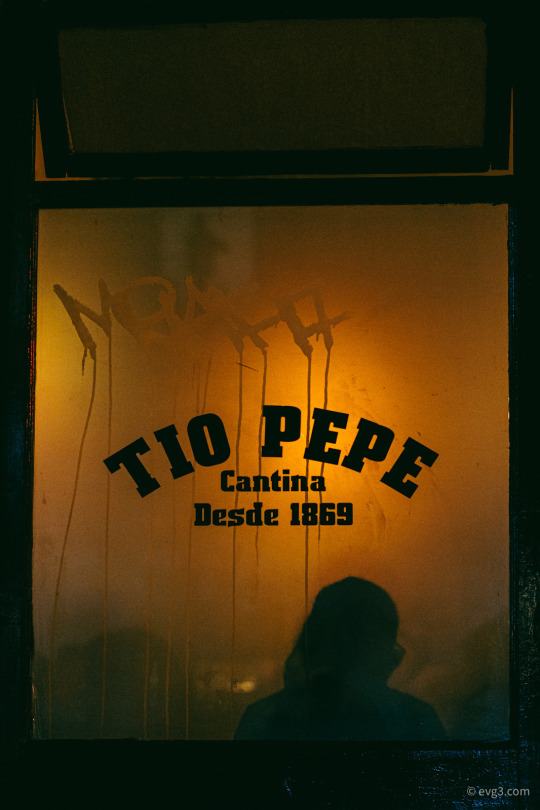





June Nocturnal Walks (Mexico City 2023), by Abelardo Ojeda.
My Street Photoblog
#street photography#photographers on tumblr#original photographers#artists on tumblr#mexican photographers#fotografos mexicanos#fotografos en tumblr#cdmx#ciudad de méxico#mexico city#lowlight#night photography#mexican culture#traveling#fotografia de calle#fotografía urbana#fotografía callejera#contemporary photography#fine art prints
2K notes
·
View notes
Text
Contemporary belief
“Faith seeking understanding” is a good definition of belief.
Faith is our experience of God and belief is our attempt to express that experience in words and symbols.
When we attempt to describe our experiences of God, we necessarily express ourselves in the symbols, words, and rituals that are products of our culture.
All of our concepts and all of our experiential interpretations are shaped to…

View On WordPress
#contemporary culture#Contemporary faith#Faith#Modern culture#Modern faith#Modern society#Society#Society and faith
0 notes
Photo



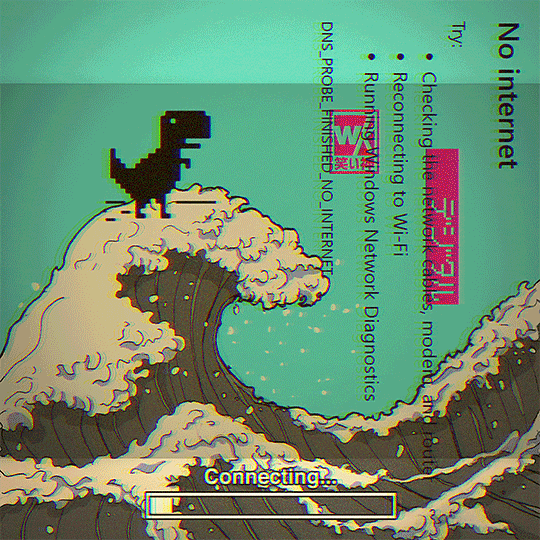
#vaporwave#pop art#vaporwave art#modern pop art#contemporary art#pop culture#aesthetic#netart#postinternet#vaporwave aesthetic#90s kids#gif#animation#loop#album post#1000#2000
4K notes
·
View notes
Text
culture tips for writing asian settings: calligraphy (pt i)
i love chinese calligraphy, to me it is just so gorgeous and i've dedicated a few scenes of my own fics to it, so here are just a few quick 'n' dirty calligraphy tips:

the calligraphy scene in sokka's master (illustrated by korean animators!) is a pretty good depiction tbh. you write using a brush (the brushes can be hung up on a stand too)—it can be jarring to see fics mention quills or parchment. one excellent detail from the show is that sokka, who seems left-handed, has to write with his right hand—the left hand holds the sleeve out of the way. the ink is not liquid/bottled, but is in a solid stick form and has to be ground on an inkstone mixed with water

traditionally, chinese text is written downwards, and goes from right to left across the page.
as with any other form of calligraphy, chinese calligraphy emphasises beauty of form over legibility—in the same way you wouldn't really consider times new roman font 'calligraphy'. there are different types of script in chinese, and for someone like piandao to master them is a reflection of his education and gentility. the semi-cursive below i see quite commonly in calligraphy:
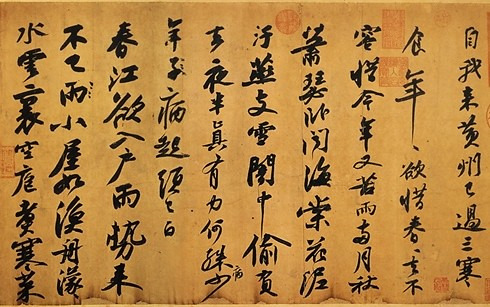
then you might have something like the cursive below is quite technical but seriously hard to read

contrast that with something like this seal script, harking back to an older era of chinese script:

any calligrapher worth their salt will be putting their stamp on the work, quite literally! name seals, also called "chops", are carved out of stone; ink it up with cinnabar paste and stamp it onto your artwork to get that iconic red signature. (i got one made a couple of years ago and there's a trick to stamping: breathe on the stamp surface after dipping in the paste to warm up the pigment, and when stamping put some circular pressure on the stone to get the print to come out evenly)
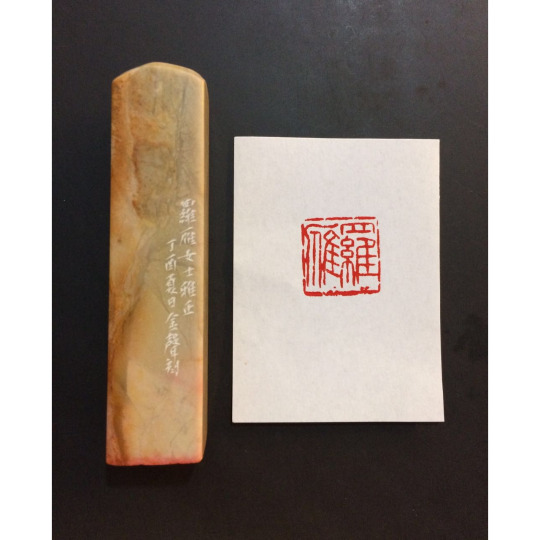
i'm going to do a second part focusing a bit more on scripts from the atla world, so keep your eyes peeled...
check out:
some more calligraphy examples from singapore's national gallery
disclaimer | more tips
#atla#atla culture#atla meta#avatar the last airbender#piandao#sokka#asian culture tips#some of the most beautiful calligraphy i saw at singapore's national art gallery#a really cool contemporary twist on the form#i took photos but my old lens was soooo bad so i don't have the specific ones i really liked but do check the link out <3
658 notes
·
View notes
Text
For my contemporary cinema class, the professor gave us a list of 8 directors and told us to pick one and write an essay about an aspect of their work we want, any one. List is James Cameron, Steven Spielberg, Francis Ford Coppola, Sofia Coppola, David Lynch, Jan Svankmajer, Jim Jarmusch and Wes Anderson (I know, only one woman, even the prof was sorry about that). Essay is supposed to be 1k words.
I chose Jim Jarmusch because frankly even though I have watched many Camerons, Spielbergs, Coppolas and co, I have zero interest in writing about them. And Only Lovers Left Alive is one of my favourite films.

So I've decided to talk about the Gothic in general and the contemporary Gothic in particular in Only Lovers Left Alive. Because some 6 years ago when I was in third year in the Sorbonne I had a class called "Gothic in Cinema" that I really loved. Problem is. I already have 6 full hand-written pages of notes, and at least 4 more articles to read. For an essay of 1,000 words.
I'm gonna have to choose only ONE aspect, or 2 if I'm economic in my wording (which I won't be because have I said that this essay is in Spanish? yeah. there's that too) of the Gothic or of the movie, and it is killing me to sacrifice like that all the ideas I have floating around my head.

This film is fantastic! And the Gothic is such a deep, mesmerizing genre! There are so many things I could write about: the emptiness of Detroit contrasting with the life of Tanger, the music nervous and slightly electro in Detroit and antic and peaceful in Tanger, when Adam is the one rejecting modernity, all the tragic romanticism of Adam versus the quiet power and elegance of Eve, the colours, the shots like a classical or expressionist painting... There are so many elements! And I found an article by a professor of Writing Studies called "The Contemporary Gothic: why we need it", and this article is fascinating and gave me so many ideas, I could use only that one as a guide and write 5k words...
...
I had forgotten how frustrating and wonderful academia is. I missed it.
#rapha talks#academia#contemporary culture#cinema#only lovers left alive#list of favourite movies#gothic cinema
16 notes
·
View notes
Text
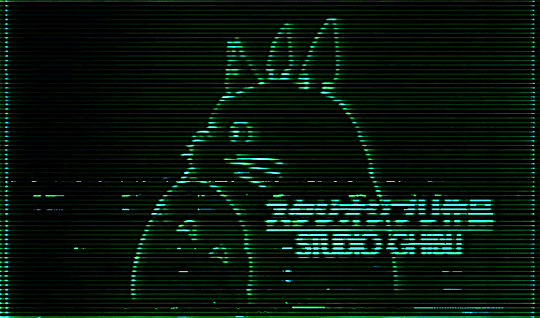


ghibli.os.gif
#ghibli#studio ghibli#anime#pop art#cyberpunk#cyber culture#retro computer#retro computing#cyberspace#cyberwave#warhol ghibli#superflat#contemporary#popart#gif#animation#post internet#postinternet#glitch#anime edit
783 notes
·
View notes
Photo


the world needs more proud butch women.
#my drawings#butch#lesbian#gay#body positive#gnc#gender nonconforming#herstory#radfem friendly#sketch#looking at photos of lesbians from the 80s and 90s#got me wishing i could have been born earlier to be part of that culture#rather than dealing with the clusterfuck that is the contemporary lgbt community
2K notes
·
View notes
Text

Hernan Bas — Conceptual Artist #20 (Performance based; acting as his own receiver, He’s been seeking a signal from the airwaves for over a decade) [acrylic on linen, 2023]
207 notes
·
View notes
Text
fascinating to watch how hozier speaking Irish in his new music is making some people: 1. fetishise him further and/or 2. make 'fun' jokes about gaeilge/gaelic/'''garlic'''' bc like. babes. i can guarantee you neither of those actions are separable from the lingering impacts of colonialism.
#not understanding some of the nuances around a 'dying' (killed) language is not shocking#but treating it like some weird little romantic bog man character trait is annoying#i'm being a wet blanket but if i creamed my pants over irish OR mocked the language here i'd get bottled#and it's been said ten ways to tuesday but stop fetishising what you believe irish culture is like#he is a normal man trying to speak a language that occupies an incredibly complex space in contemporary Ireland#how majority-white cultures victim to colonisation are worshipped/fetishised in a still-bad way but different compared to POC cultures...#i want an essay#the way people are drooling over it while showing that they didn't care about it until their fave white boy sang it...#additionally in a way they have never cared about POC native languages...........#none of this is hozier's fault it's just fascinating culturally#gaeilge#wasteland baby#colonialism#irish language#unreal unearth#hozier
381 notes
·
View notes
Photo

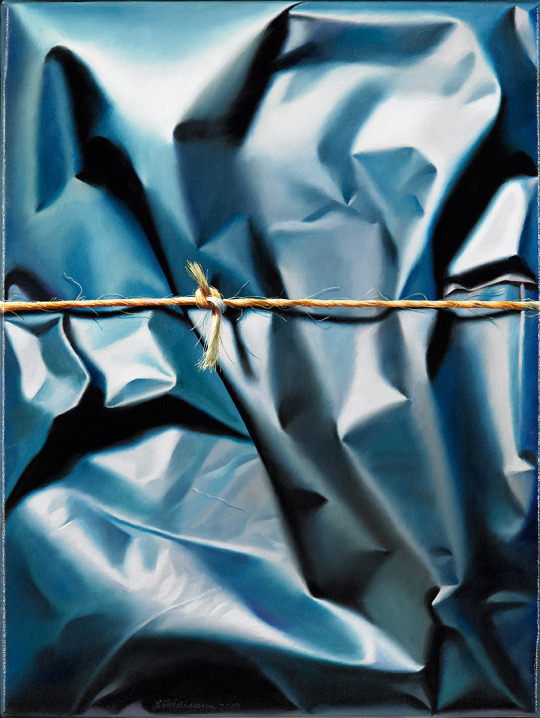
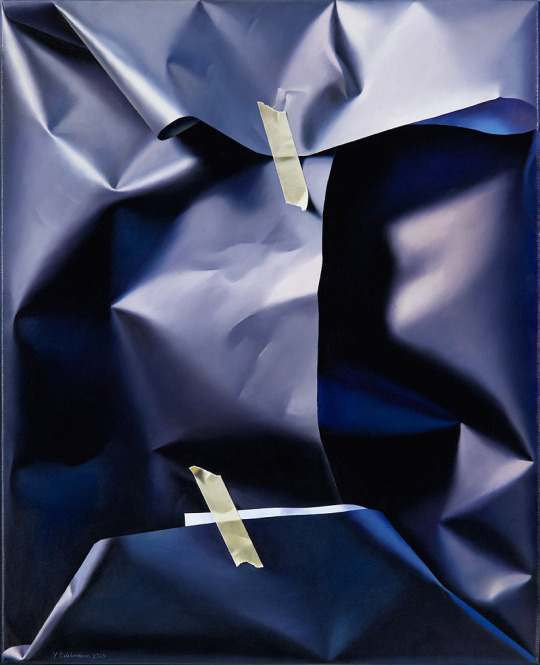

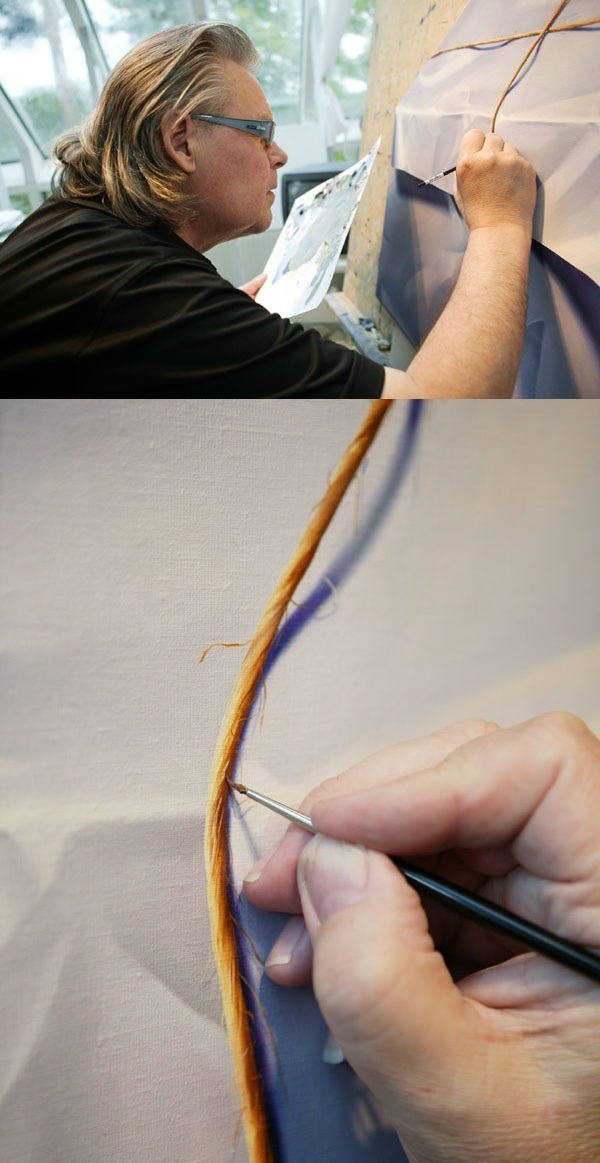

Unboxing Illusions: Yrjö Edelmann's Hyperrealistic Packaging Paintings
80 notes
·
View notes